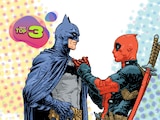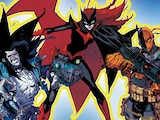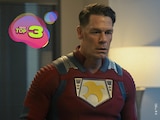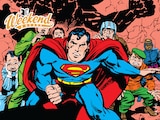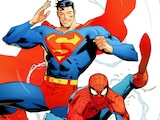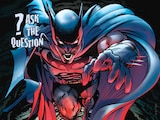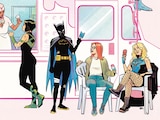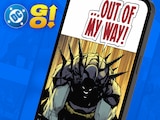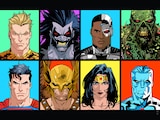Two years ago, Milestone returned to comic shops, bringing with them the groundbreaking superheroes they first introduced to readers in 1993. Of these, Static was certainly the highest profile and most highly anticipated. In Static: Season One, writer Vita Ayala and artists ChrisCross and Nikolas Draper-Ivey blended elements from the 2000 animated series with the grounded, more socially resonant aspects of the original Milestone series for a modern take on the hero. The result was a critical and cultural success, featuring every quality that makes Static one of comics’ most exciting and relatable teen superheroes.
In 2023, Ayala and Draper-Ivey followed up their first run with a sequel that makes the obstacles Virgil Hawkins went through to become Static look like a sunny day in the park. Static: Shadows of Dakota is an intense, moody, but ultimately hopeful series which works to make Static a more resonant hero for current times and builds him up into what he truly is—one of the very best characters in the DC Universe. With seven issues of lush, atmospheric artwork and ravaging pathos, Static: Shadows of Dakota may well be the best Static story ever printed.
The Premise:

It’s been three months since the Big Bang where hundreds of young people were either killed or transformed into super-powered beings. Virgil Hawkins has come into his own as Dakota’s electric-powered hero, not only helping those who can’t help themselves, but working to erase the stigma that Bang Babies are a threat to the larger populace. He’s got his work cut out for him, as mercenaries have been hitting the pavement, snatching up young Bang Babies for reasons yet unknown.
Looming over all of this is the mysterious figure calling himself Ebon. With a godlike command over shadows, this horrific Bang Baby is out to locate his missing younger brother Adam, who was kidnapped some months back. And unlike Static, Ebon is more than willing to kill to get what he’s after. It’s inevitable that the paths between Ebon and Static will cross, and both young men will push each other into redefining their notions of heroism and justice.
Let’s Talk Talent:

As previously mentioned, both Vita Ayala and Nikolas Draper-Ivey are back from Static: Season One to continue their work on revamping the young superhero. Draper-Ivey has graduated to co-writer for this story, and works the artwork solo this time around. The result is an impassioned, hot-blooded story of righteous anger, oppression and a yearning for restorative justice.
Much of what drives both Static and Ebon is a refusal to be victimized by powerful organizations who choose to use vulnerable communities to their wicked ends. This comes through in spades via Draper-Ivey’s dynamic artwork, with its lush, painter-like fluidity of motion. The real visual treat is Ebon, whose shadow powers are presented with the blunt terror of a Japanese horror film. This new version of the villain invades people’s minds and tears them apart both inside and out. (A far cry from the animated series in which Ebon was originally created!) A creepy mix of awful and awe-inspiring, Ebon as drawn by Draper-Ivey makes you question how in the world Static could possibly stand up against him. It's a question that Ayala and Draper-Ivey’s writing gives a full workout, specifically in issue #6.
A Few Reasons to Read:

- What Static and Ebon are struggling against is plainly reflective of current injustices that are happening in the country felt by vulnerable communities all over. From gun violence to government discrimination to corrupt policing, these are issues at the forefront of the series’ mind, making what Static and Ebon have to say about it both resonant and relevant. This also extends to the series’ supporting cast, including Virgil’s parents and sister Sharon, Daisy, Frieda, Richie and a new young character named Quincy, who proves to be a pivotal player at the book’s halfway point.
- Fans of the animated series will no doubt recall that Ebon’s brother Adam in the cartoon series was the costumed criminal-turned-hero Rubberband Man. While his appearances here are pretty sparse, his presence drives Ebon’s motives. The depiction by the creators is at once both logical and shocking, as well as creepy!
- Static continues to develop his crimefighting persona throughout the series, updating his look repeatedly. With Static: Season One his early costume was a very clear throwback to his Milestone bodysuit, but here his costume is more reflective of his famous dark coat style. With each design looking slicker than the last, the costumes in this series never miss!
Why It’s Worth Your Time:

February has become a time of celebration at DC, with the DC Power anthology comic releasing for Black History Month, and a celebration of Black heroes becoming an annual tradition. Static: Shadows of Dakota is very much “in the now,” written by two Black creators about very real and ongoing injustices, with their hero and villain quarreling over how to resolve them. Beyond superpowers and fictional landmark cities, the conversation this story represents is happening every day in group chats and barbershops and dinner tables and bedroom floors. It’s a conversation difficult to frame in a superhero setting, but creators Ayala and Draper-Ivey thread the needle effortlessly here to have Static be its avatar. With conviction and pangs of hopeful determination, Static: Shadows of Dakota is immediately one of DC’s very best productions, and a soaring credit to the ethos of both Static and Milestone.
Static: Shadows of Dakota by Nikolas Draper-Ivey and Vita Ayala is now available in a hardcover graphic novel and can be read in full on DC UNIVERSE INFINITE.
Donovan Morgan Grant writes about comics, graphic novels and superhero history for DC.com. Follow him on Twitter at @donoDMG1.
NOTE: The views and opinions expressed in this feature are solely those of Donovan Morgan Grant and do not necessarily reflect those of DC or Warner Bros. Discovery, nor should they be read as confirmation or denial of future DC plans.

